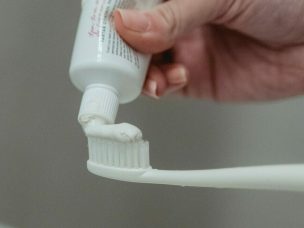Tezepelumab reduced the levels of T2 inflammatory biomarkers, leading to reduced exacerbations and airway inflammation in patients suffering from severe asthma.
Asthma is a prevalent disorder in the global population, with approximately 10% of the world population suffering from severe asthma. Patients with severe asthma demonstrate uncontrollable disease despite the administration of inhaled therapies with long-acting muscarinic agonists, glucocorticoids, and long-acting β2 agonists. Tezepelumab, a human monoclonal antibody, binds to thymic stromal lymphopoietin (TSLP). Tezepelumab prevents TSLP from binding to its heterodimeric receptor. The heterodimeric receptor is composed of the interleukin (IL)-7 receptor α-chain and TSLP receptor chain. Tezepelumab reduced asthma exacerbations and was well-tolerated in a phase IIb PATHWAY study. This study is a post hoc analysis of the phase IIb PATHWAY study.
This study, published in the journal Allergy, included the randomization of 550 patients with severe uncontrolled asthma to a placebo group or a tezepelumab group, which was administered either 70 mg or 210 mg every 4 weeks or 280 mg every 2 weeks. The researchers measured the levels of parameters at baseline and up to 52 weeks. These parameters included serum total immunoglobulin E (IgE), blood eosinophil count, periostin, fractional exhaled nitric oxide (FeNO), IL-5, IL-13, TSLP, and thymus and activation-regulated chemokine (TARC). The authors also analyzed annualized asthma exacerbation rates (AAERs) by measuring baseline threshold levels of biomarkers in the placebo and tezepelumab groups.
Out of the total 550 patients included in this study, 138 patients received subcutaneous tezepelumab 70 mg Q4W, 137 patients received tezepelumab 210 mg Q4W, 137 patients received tezepelumab 280 mg Q2W, and 138 patients were included in the placebo group for Q2W. Among the patients in the placebo group, high AAER was observed with an increase in the baseline levels of IL-5, FeNO, and blood eosinophil counts. Among patients included in the tezepelumab group, the reduction in the AAER was maintained throughout the baseline levels of FeNO, IL-5, and blood eosinophil counts. AAER was lower in the tezepelumab treatment group than in the placebo group. The study also demonstrated a decline in the exacerbation rates following treatment with tezepelumab. The exacerbation rates in patients in the placebo group were relatively higher in patients with high baseline levels of blood eosinophil counts as compared to patients with low baseline levels of blood eosinophil counts.
In summary, this study demonstrated positive correlations between the baseline levels of type 2 (T2) inflammatory biomarkers, including periostin, blood eosinophil count, IL-5, IL-13, and FeNO. In contrast to the placebo group, tezepelumab 210 mg reduced all biomarkers’ baseline levels.
Reference
Corren, J., Pham, T. H., Garcia Gil, E., Sałapa, K., Ren, P., Parnes, J. R., . . . Griffiths, J. M. (2022). Baseline type 2 biomarker levels and response to tezepelumab in severe asthma. Allergy, 77(6), 1786-1796. https://doi.org/10.1111/all.15197










